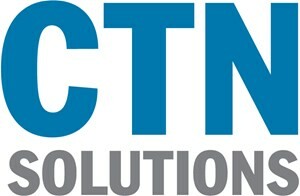Bring Your Own Device, or BYOD, has become an accepted practice in the workplace, but only when it’s implemented properly. The fact remains that allowing workers to use their personal devices for work purposes has its benefits and disadvantages, and that you should only allow them to do so after they adhere to your company’s BYOD policy. Of course, this assumes that you actually have a policy, so let’s talk about how to set up a quality BYOD policy.
Approximately 92 percent of those who use BYOD claim to use their smartphones for work purposes at least once every week, while 40 percent of respondents from a survey by Software Advice found that they have ran into fewer technical problems with their personal devices. The idea is that users are more familiar with their own devices, which in turn leads to fewer technical hiccups and need for help desk support.
Allowing your employees to connect to your in-house network and work using their personal devices can be beneficial, but you need to approach the risk in a realistic fashion. Your business should consider the following three restrictions to add to your organization’s Bring Your Own Device policy.
Data and User Access
The security of your data should be top priority when implementing a new technology solution, particularly with BYOD. It’s important to remember that the security of your data is only as optimal as the security of the devices accessing your data. Therefore, the more endpoints that are accessing your data, the greater the risk to your data. The natural solution is to limit the amount of devices that access data, but this isn’t feasible when you have a network filled with users who need access to specific data for their daily duties. Thankfully, BYOD policies and user management solutions allow your business to restrict access to certain data on a per-user basis, thus limiting users from accessing data which they have no business seeing. The result is greater security without compromising operations.
Application Whitelisting/Blacklisting
Certain applications will request access to data that may or may not be required for them to perform properly. A classic example is something like a smartphone flashlight application requiring access to your contacts or email address in order to function. A good BYOD policy should include a mobile device management solution that can whitelist and blacklist apps from accessing sensitive corporate data.
Security Best Practices
Employee education is an important part of implementing a BYOD policy. You need to make security second-nature for anyone who brings in their mobile devices, as their practices outside the office could have an effect on the way they use their devices on your network. Take the time to show them how to stay safe online, and be sure to quiz them regularly as to your preferred security best practices. Doing so protects your organization’s infrastructure and your employees’ personal devices, so it’s a win-win scenario. In fact, whenever an employee brings a new device to work, you should have either your IT department or an outsourced provider train them on how best to use it while in the workplace.
As the number of devices in the workplace skyrockets, it’s better to embrace these changes than to ignore them entirely. To learn more about BYOD, reach out to us at (610) 828- 5500.
